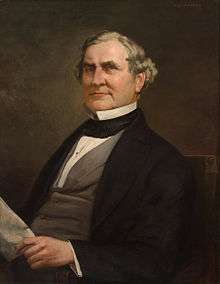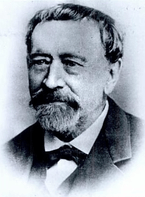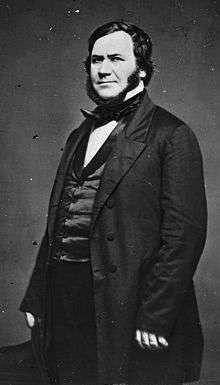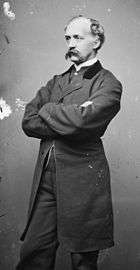United States House of Representatives elections, 1858 and 1859
|
| |||||||||||||||||||||||||||||||||||||||||||||||
| |||||||||||||||||||||||||||||||||||||||||||||||
All 238[Note 2] seats in the U.S. House of Representatives 120 seats needed for a majority | |||||||||||||||||||||||||||||||||||||||||||||||
|---|---|---|---|---|---|---|---|---|---|---|---|---|---|---|---|---|---|---|---|---|---|---|---|---|---|---|---|---|---|---|---|---|---|---|---|---|---|---|---|---|---|---|---|---|---|---|---|
| |||||||||||||||||||||||||||||||||||||||||||||||
| |||||||||||||||||||||||||||||||||||||||||||||||
Elections to the United States House of Representatives for the 36th Congress were held in 1858–1859 during James Buchanan's presidency. Following these elections, the Republicans won the most seats in the House for the first time, benefiting from the continued breakdown in the anti-immigration and anti-Catholic American Party of the Know Nothing Movement, and from strife within the Democratic Party.
The Republicans were actually 4 seats short of a numerical majority and were forced to form a minority government, but were able to exercise authority with assistance from members of the two smaller parties also elected to the House. The deeply divided Democrats continued to fall apart due to the slavery issue, losing a number of seats. The American Party all but collapsed as immigration became a less prominent issue and because of the party's vague stance on slavery. Southern politicians opposed to secession, Whigs who had been dissatisfied with the Republican Party during their short membership, as well as some former Know-Nothings, came together and ran on the Southern Opposition Party ticket (not to be confused with the Northern Opposition Party of 1854 which was opposed to the spread of slavery into the new territories),[1] which generally allied more with the Republicans than Democrats.
For several states, this was the last Congressional election until the Reconstruction Era, and 29 of the Representatives elected in this election resigned near the end of the Congress following their states' secession from the Union.
Special elections
There were special elections in 1858 and 1859 during the 35th United States Congress and 36th United States Congress.
35th Congress
| District | Vacator | Reason for Vacancy | Candidates | ||
|---|---|---|---|---|---|
| Representative | Party | First elected | |||
| Illinois 6 | Thomas L. Harris | Democratic | 1854 | Incumbent died. New member elected January 4, 1859. Democratic hold. Winner was not elected to the next term. |
|
| Massachusetts 7 | Nathaniel P. Banks | Republican | 1852 | Incumbent resigned December 24, 1857 to become Governor of Massachusetts. New member elected January 31, 1858. Republican hold. |
√ Daniel W. Gooch (Republican) [Data unknown/missing.] |
| Mississippi 5 | John A. Quitman | Democratic | 1855 | Incumbent died December July 17, 1858. New member elected October 4, 1858. Democratic hold. Winner seated December 7, 1858. |
√ John J. McRae (Democratic) 99.08% Scattering 0.92% |
| North Carolina 8 | Thomas L. Clingman | Democratic | Incumbent resigned May 7, 1858 to become U.S. Senator. New member elected August 5, 1858.[2] Know Nothing gain. Winner seated December 7, 1858. |
√ Zebulon B. Vance (Know Nothing) 57.02% William W. Avery (Democratic) 42.98%[2] | |
| Pennsylvania 8 | J. Glancy Jones | Democratic | Incumbent resigned October 30, 1858. New member elected November 30, 1858.[3] Republican gain. Winner seated December 7, 1858. Winner did not run for the next term, see below. |
√ William H. Keim (Republican) 51.98% Joel B. Warner (Democratic) 48.02%[3] | |
| New York 4 | John Kelly | Democratic | Incumbent resigned December 25, 1858. New member elected January 4, 1859.[4] Independent Democratic gain. Winner was also already elected to the next term, see below. |
√ Thomas J. Barr (Independent Democratic) 96.89% Scattering 3.11% | |
| Oregon at-large | New state | New member elected February 14, 1859. Democratic gain. Winner did not run for the next term, see below. |
√ La Fayette Grover (Democratic) [Data unknown/missing.] | ||
36th Congress
| District | Vacator | Reason for Vacancy | Candidates | ||
|---|---|---|---|---|---|
| Representative | Party | First elected | |||
| Ohio 14 | Cyrus Spink | Republican | 1858 | Incumbent died May 31, 1859. New member elected October 11, 1859. Republican hold. |
√ Harrison G. O. Blake (Republican) 56.17% Neal Power (Democratic) 43.83%[5] |
| Illinois 6 | Thomas L. Harris | Democratic | 1854 | Incumbent died November 24, 1858. New member elected November 8, 1859. Democratic hold. |
|
| Virginia 4 | William Goode | Democratic | 1853 | Incumbent died May 31, 1859. New member elected October 27, 1859.[6] Democratic hold. Winner seated December 7, 1859. |
√ Roger Pryor (Democratic) Thomas F. Goode (Democratic)[6] |
Election summaries
One seat was added for the new states of Kansas[7] and Oregon[8] which were unrepresented for most of the 36th Congress. For several Southern states, these were the last congressional elections they took part in until Reconstruction.
| 116 | 19 | 5 | 98 |
| Republican | Opp. | KN | Democratic |
| State | Type | Date | Total seats |
Republican | Democratic | Opposition | Know-Nothing | ||||
|---|---|---|---|---|---|---|---|---|---|---|---|
| Seats | Change | Seats | Change | Seats | Change | Seats | Change | ||||
| Special election(s), not counted in totals below | |||||||||||
| Oregon | At-large | June, 1858[Note 4] | 1 | 0 | 1 | 0 | 0 | ||||
| Kansas[Note 5] | At-large | December 1, 1859 | 1 | 1 | 0 | 0 | 0 | ||||
| General elections | |||||||||||
| Arkansas | District | August 2, 1858 | 2 | 0 | 2 | 0 | 0 | ||||
| Florida | At-large | October 4, 1858 | 1 | 0 | 1 | 0 | 0 | ||||
| Indiana | District | October 12, 1858 | 11 | 7 | 4[Note 6] | 0 | 0 | ||||
| Iowa | District | October 12, 1858 | 2 | 2 | 0 | 0 | 0 | ||||
| Maine | District | September 13, 1858 | 6 | 6 | 0 | 0 | 0 | ||||
| Missouri | District | August 2, 1858 | 7 | 1 | 5[Note 7] | 0 | 1 | ||||
| Ohio | District | October 12, 1858 | 21 | 15 | 6 | 0 | 0 | ||||
| Pennsylvania | District | October 12, 1858 | 25 | 20 | 5[Note 8] | 0 | 0 | ||||
| South Carolina | District | October 10–11, 1858 | 6 | 0 | 6 | 0 | 0 | ||||
| Vermont | District | September 7, 1858 | 3 | 3 | 0 | 0 | 0 | ||||
| Delaware | At-large | November 2, 1858 (Election Day)[Note 9] |
1 | 0 | 1 | 0 | 0 | ||||
| Illinois | District | 9 | 4 | 5 | 0 | 0 | |||||
| Massachusetts | District | 11 | 11 | 0 | 0 | 0 | |||||
| Michigan | District | 4 | 4 | 0 | 0 | 0 | |||||
| New Jersey | District | 5 | 3 | 2[Note 10] | 0 | 0 | |||||
| New York | District | 33 | 26 | 7[Note 11] | 0 | 0 | |||||
| Wisconsin | District | 3 | 2 | 1 | 0 | 0 | |||||
| Late general elections (After the March 4, 1859 beginning of Congress) | |||||||||||
| New Hampshire | District | March 8, 1859 | 3 | 3 | 0 | 0 | 0 | ||||
| Connecticut | District | April 4, 1859 | 4 | 4 | 0 | 0 | 0 | ||||
| Rhode Island | District | April 7, 1859 | 2 | 2 | 0 | 0 | 0 | ||||
| Virginia | District | May 26, 1859 | 13 | 0 | 12[Note 12] | 1 | 0 | ||||
| Oregon | At-large | June 27, 1859 | 1 | 0 | 1 | 0 | 0 | ||||
| Alabama | District | August 1, 1859 | 7 | 0 | 7 | 0 | 0 | ||||
| Kentucky | District | August 1, 1859 | 10 | 0 | 5 | 5 | 0 | ||||
| Texas | District | August 1, 1859 | 2 | 0 | 2[Note 13] | 0 | 0 | ||||
| North Carolina | District | August 4, 1859 | 8 | 0 | 4 | 4 | 0 | ||||
| Tennessee | District | August 4, 1859 | 10 | 0 | 3 | 7 | 0 | ||||
| California | At-large | September 7, 1859 | 2 | 0 | 2 | 0 | 0 | ||||
| Georgia | District | October 3, 1859 | 8 | 0 | 6 | 2 | 0 | ||||
| Mississippi | District | October 3, 1859 | 5 | 0 | 5 | 0 | 0 | ||||
| Minnesota | At-large | October 4, 1859 | 2 | 2 | 0 | 0 | 0 | ||||
| Louisiana | District | November 7, 1859 | 4 | 0 | 3 | 0 | 1 | ||||
| Maryland | District | November 8, 1859 | 6 | 0 | 3 | 0 | 3 | ||||
| Total[Note 2] | 238 | 115 48.5% |
98[Note 3] 41.4% |
19 8.0% |
5 2.1% |
||||||
Complete returns
California
Note: From statehood to 1864, California's representatives were elected at-large, with the top two vote-getters winning election from 1849 to 1858; in 1860 when California gained a seat in the House the top three vote-getters were elected.
| District | Incumbent | Party | First elected |
Status | Candidates |
|---|---|---|---|---|---|
| California at-large (Seat 1) |
Charles L. Scott | Democratic | 1856 | Incumbent re-elected. |
|
| California at-large (Seat 2) |
Joseph C. McKibbin | Anti-Lecompton Democratic | 1856 | Incumbent lost re-election. New member elected. Democratic hold. |
Ohio
| District | Incumbent | Party | First elected |
Result | Candidates[9] |
|---|---|---|---|---|---|
| Ohio 1 | George H. Pendleton | Democratic | 1856 | Incumbent re-elected. |
|
| Ohio 2 | William S. Groesbeck | Democratic | 1856 | Incumbent lost re-election. New member elected. Republican gain. |
|
| Ohio 3 | Clement L. Vallandigham | Democratic | 1856[Note 14] | Incumbent re-elected. |
|
| Ohio 4 | Matthias H. Nichols | Republican | 1852 | Incumbent lost re-election. New member elected. Democratic gain. |
|
| Ohio 5 | Richard Mott | Republican | 1854 | Incumbent retired. New member elected. Republican hold. |
|
| Ohio 6 | Joseph R. Cockerill | Democratic | 1856 | Incumbent retired. New member elected. Democratic hold. |
|
| Ohio 7 | Aaron Harlan | Republican | 1852 | Incumbent lost renomination. New member elected. Republican hold. |
|
| Ohio 8 | Benjamin Stanton | Republican | 1854 | Incumbent re-elected. |
|
| Ohio 9 | Lawrence W. Hall | Democratic | 1856 | Incumbent lost re-election. New member elected. Republican gain. |
|
| Ohio 10 | Joseph Miller | Democratic | 1856 | Incumbent lost re-election. New member elected. Republican gain. |
|
| Ohio 11 | Albert C. Thompson | Republican | 1854 | Incumbent retired. New member elected. Democratic gain. |
|
| Ohio 12 | Samuel S. Cox | Democratic | 1856 | Incumbent re-elected. |
|
| Ohio 13 | John Sherman | Republican | 1854 | Incumbent re-elected. |
|
| Ohio 14 | Philemon Bliss | Republican | 1854 | Incumbent retired. New member elected. Republican hold. |
|
| Ohio 15 | Joseph Burns | Democratic | 1856 | Incumbent lost re-election. New member elected. Republican gain. |
|
| Ohio 16 | Cydnor B. Tompkins | Republican | 1856 | Incumbent re-elected. |
|
| Ohio 17 | William Lawrence | Democratic | 1856 | Incumbent retired. New member elected. Republican gain. |
|
| Ohio 18 | Benjamin F. Leiter | Republican | 1854 | Incumbent retired. New member elected. Republican hold. |
|
| Ohio 19 | Edward Wade | Republican | 1852 | Incumbent re-elected. |
|
| Ohio 20 | Joshua Reed Giddings | Republican | 1842 | Incumbent lost renomination. New member elected. Republican hold. |
|
| Ohio 21 | John Bingham | Republican | 1854 | Incumbent re-elected. |
|
See also
Notes
- ↑ Excludes states admitted during this Congress
- 1 2 3 Includes late elections
- 1 2 Includes 8 Anti-Lecompton Democrats and 7 Independent Democrats.
- ↑ New state. Representative seated February 14, 1859, less than a month before the end of the 35th Congress.
- ↑ New state. Representative seated January 29, 1861, and continued into the 37th Congress.
- ↑ Includes 1 Anti-Lecompton Democrat (IN-07).
- ↑ Includes 1 Independent Democrat (MO-02).
- ↑ Includes 2 Anti-Lecompton Democrats (PA-06 and PA-08).
- ↑ In 1845, Congress passed a law providing for a uniform date for choosing presidential electors (see: Statutes at Large, 28th Congress, 2nd Session, p. 721). Congressional elections were unaffected by this law, but the date was gradually adopted by the states for Congressional elections as well.
- ↑ Both Anti-Lecompton Democrats
- ↑ Includes 1 Independent Democrat (NY-04) and 3 Anti-Lecompton Democrats (NY-08, NY-09, and NY-14) – see Martis, pp. 112–113.
- ↑ Includes 4 Independent Democrats (VA-03, VA-06, VA-09, and VA-13).
- ↑ Includes 1 Independent Democrat (TX-02).
- ↑ Contested election
References
- ↑ See The Kansas-Nebraska act
- 1 2 https://www.ourcampaigns.com/RaceDetail.html?RaceID=232166
- 1 2 https://www.ourcampaigns.com/RaceDetail.html?RaceID=537134
- ↑ https://www.ourcampaigns.com/RaceDetail.html?RaceID=725486
- ↑ https://www.ourcampaigns.com/ContainerHistory.html?ContainerID=598
- 1 2 https://www.ourcampaigns.com/RaceDetail.html?RaceID=720671
- ↑ 11 Stat. 11- 269 269
- ↑ 11 Stat. 11- 383 383
- ↑ Smith, Joseph P, ed. (1898). History of the Republican Party in Ohio. I. Chicago: the Lewis Publishing Company. pp. 84, 85.
Bibliography
- Dubin, Michael J. (March 1, 1998). United States Congressional Elections, 1788-1997: The Official Results of the Elections of the 1st Through 105th Congresses. McFarland and Company. ISBN 978-0786402830.
- Martis, Kenneth C. (January 1, 1989). The Historical Atlas of Political Parties in the United States Congress, 1789-1989. Macmillan Publishing Company. ISBN 978-0029201701.
- Moore, John L., ed. (1994). Congressional Quarterly's Guide to U.S. Elections (Third ed.). Congressional Quarterly Inc. ISBN 978-0871879967.
- "Party Divisions of the House of Representatives* 1789–Present". Office of the Historian, House of United States House of Representatives. Retrieved January 21, 2015.
External links
- Office of the Historian (Office of Art & Archives, Office of the Clerk, U.S. House of Representatives)



